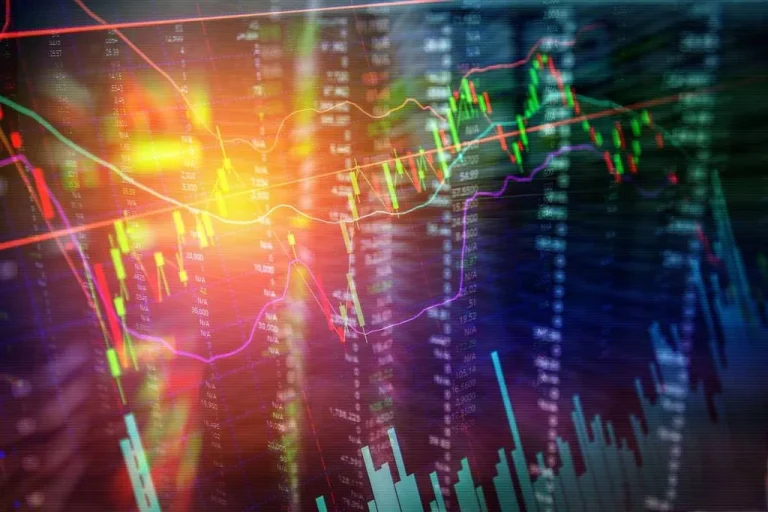Your goal can be to match the efficiency of sure market indexes rather than making an attempt to outperform them. Passive managers simply search to own all the shares in a given market index, in the proportion they’re held in that index. The battle among actively managed and index replication equity funds in phrases of risk-adjusted efficiency and alpha technology has been a grey space since the inception of mutual funds. The interest within the topic continually lightens up as fresh devices infiltrate monetary markets. • The variety of actively managed mutual funds in the us stood at about 6,585 as of June 2023 vs. 517 index funds, based on Statista.
It’s most likely what you consider when you envision traders on Wall Street, although these days you are capable of do it from the comfort of your smartphone using apps like Robinhood. According to industry research, round 38% of the U.S. stock market is passively invested, with inflows rising every year. Despite being more technical and requiring extra expertise, energetic investing usually gets it mistaken even with essentially the most in-depth basic analysis to again up a given funding thesis. Besides the overall convenience of passive investing strategies, they are additionally more cost-effective, especially at scale (i.e. economies of scale). Active vs Passive Investing is a long-standing debate throughout the funding neighborhood, with the central question being whether or not the returns from lively administration justify a better fee structure. After all, passive investing could additionally be more price efficient, but it means being tied to a sure market sector — up, down, and sideways.
The indices chosen by Morgan Stanley Wealth Management to measure performance are consultant of broad asset classes. Morgan Stanley Wealth Management retains the proper to vary representative indices at any time. Asset allocation and diversification do not guarantee a revenue or defend towards loss in declining monetary markets. Get prompt access to video classes taught by experienced funding bankers. Learn monetary statement modeling, DCF, M&A, LBO, Comps and Excel shortcuts.
What’s Active Vs Passive Investing?
A passive investor hardly ever buys individual investments, preferring to carry an investment over a protracted interval or buy shares of a mutual or exchange-traded fund. These buyers tend to depend on fund managers to ensure the investments held within the funds are performing and count on them to exchange declining holdings. Passive investing strategy is when an investor buys and holds a mix of belongings for an extended interval. Many passive buyers will put money into passively-managed index funds, which attempt to duplicate the performance of a benchmark index.

The decades-long debate over the virtues of energetic versus passive investing shifted abruptly in 2022. High inflation, rising interest rates and economic uncertainty disrupted fairness markets, ending a long bull market and sending main indexes into a spin. That reinvigorated the fortunes of inventory pickers, who by some measures beat the market on the highest rate in nearly 20 years. It also slowed the $11 trillion march towards passive investing, a strategy by which an investor buys funds that hold all the shares in an index like the S&P 500. Confusing matters further, the lines between these two camps keep blurring, as energetic investing gets more passive and passive gets more energetic.
Each approach has its personal deserves and inherent drawbacks that an investor should think about. Thus, downturns in the economy and/or fluctuations are seen as temporary and a essential side of the markets (or a potential opportunity to decrease the acquisition worth – i.e. “dollar price averaging”). ✝ To check the charges and terms you could qualify for, SoFi conducts a gentle credit pull that will not have an effect on your credit rating. However, when you choose a product and proceed your application, we’ll request your full credit score report from a number of client reporting companies, which is considered a tough credit score pull and should have an effect on your credit.
In the previous couple of decades, index-style investing has turn out to be the technique of selection for tens of millions of buyers who’re glad by duplicating market returns instead of trying to beat them. Research by Wharton college and others has shown that, in many cases, “active” investment managers aren’t in a position to decide sufficient winners to justify their high fees. I examined all three approaches by creating two-fund portfolios that invested half their monies in considered one of Vanguard’s actively managed large-growth funds and the opposite half in a large-value fund. The first portfolio held the funds with highest trailing returns for their categories as of December 1992, while the second purchased the funds with the very best Sharpe ratios.
To Learn This Content Please Select One Of Many Choices Under:
Even if an lively fund produced somewhat better returns, over time the fee financial savings of the passive approach would outweigh that difference in efficiency. Vanguard, with its emphasis on low costs, grew slowly at first. There’s more to the question of whether to speculate passively or actively than that high level picture, nonetheless. Active strategies have tended to profit buyers extra in sure investing climates, and passive methods have tended to outperform in others. For example, when the market is unstable or the financial system is weakening, lively managers could outperform more typically than when it’s not. Conversely, when particular securities within the market are transferring in unison or fairness valuations are extra uniform, passive strategies will be the higher way to go.
For most people, there’s a time and a spot for energetic and passive investing over a lifetime of saving for main milestones like retirement. More advisors wind up combining the two strategies—despite the grief all sides gives the other over their strategy. When you personal fractions of thousands of shares, you earn your returns simply by participating within the upward trajectory of company profits over time by way of the overall inventory market. Successful passive traders keep their eye on the prize and ignore short-term setbacks—even sharp downturns. Some investors have very sturdy opinions about this topic and will not be persuaded by our nuanced view that both approaches might have a spot in investors’ portfolios. If your top precedence as an investor is to scale back your charges and buying and selling costs, period, an all-passive portfolio might make sense for you.
How Much Of The Market Is Passively Invested?
Retirees who care most about earnings may actively select particular stocks for dividend progress whereas still maintaining a buy-and-hold mentality. Dividends are money funds from firms to buyers as a reward for proudly owning the stock. Active mutual fund managers, both in the United States and abroad, constantly underperform their benchmark index. For occasion, sesearch from S&P Global discovered that over the 20-year interval ended 2022, only about 4.1% of professionally managed portfolios in the us constantly outperformed their benchmarks.
Accordingly, the target of this chapter is to distinctly underscore whether or not an investor ought to be concerned in choosing between active and various passive funding structures. But even commonplace actively managed funds, which may cost 1% or 1.5% and even 2% annually, are far higher than the funding charges of most passive funds, where the annual expense ratio may be only some basis factors. Active investing is a technique where an investor attempts to beat the market by buying and selling particular person stocks, bonds, or different securities.
Energetic Vs Passive Investing: Key Variations
Many advisors keep your investments balanced and reduce taxable gains in varied ways. Active fund managers assess a wide range of knowledge about every investment in their portfolios, from quantitative and qualitative data about securities to broader market and economic trends. Using that information, managers purchase and promote belongings to capitalize on short-term worth fluctuations and maintain the fund’s asset allocation on monitor. You’d assume knowledgeable cash manager’s capabilities would trump a basic index fund.
Index funds have not become well-liked solely due to their returns. To justify attention from would-be indexers, Vanguard’s lively funds should satisfy two extra criteria. If not, they can’t adequately substitute for funds that invariably deliver what the tin promises. Second, could investors have identified the successful https://www.xcritical.com/ energetic funds in advance? A passive strategy utilizing an S&P index fund does better on common than an active approach. With so many pros swinging and lacking, many individual buyers have opted for passive funding funds made up of a preset index of stocks or other securities.
It’s unlikely that an amateur investor, with fewer resources and fewer time, will do higher. To get the market’s long-term return, nonetheless, passive buyers have to truly stay passive and hold their positions (and ideally including more money to their portfolios at regular intervals). Passive investing and energetic investing are two contrasting strategies for placing your cash to work in markets. Both gauge their success towards widespread benchmarks just like the S&P 500—but active investing usually seems to beat the benchmark whereas passive investing aims to duplicate its performance.

Active investing vs. passive investing typically refers again to the two major approaches to structuring mutual fund and exchange-traded fund (ETF) portfolios. Active investing is a technique where human portfolio managers choose investments they imagine will outperform the market — whereas passive investing depends on a formulation to mirror the efficiency of sure market sectors. Bogle concluded that as a outcome of active mutual funds cost greater fees, their actual performance would usually be worse than their index counterparts. A typical energetic inventory fund at Fidelity Investments would possibly charge 70 cents for every $100 invested.Fidelity’s 500 Index Fund charges 5 cents.
- Vanguard, with its emphasis on low prices, grew slowly at first.
- In the build-up of an funding determination, the existence of both lively and passive funding automobiles triggers a puzzle for investors.
- Many investment commentators declare that the rationale to own index funds is for his or her superior performance.
- Passive investing is when an investor buys belongings and holds onto them for a long period.
Depending on the chance in several sectors of the capital markets, investors may have the ability to profit from mixing both passive and energetic strategies—the better of each worlds, when you will—in a means that leverages these insights. Market situations change all the time, nonetheless, so it often takes an informed eye to resolve when and how much to skew toward passive versus active investments. Active investing means investing in funds whose portfolio managers select investments based on an unbiased evaluation of their worth—essentially, making an attempt to choose essentially the most engaging investments. Generally talking, the goal of active managers is to “beat the market,” or outperform certain standard benchmarks. For instance, if you’re an energetic US fairness investor, your aim may be to achieve higher returns than the S&P 500 or Russell 3000. Also, there is a physique of research demonstrating that indexing sometimes performs higher than energetic administration.
As a group, they have not matched the performance of index funds, so clients, together with some giant public pension funds, have pulled their money. Buffett, in his most up-to-date annual letter, estimated that traders what are the pros and cons of active investing wasted more than $100 billion on high-fee Wall Street cash managers over the past 10 years. “Both giant and small traders should stick to low-cost index funds,” he wrote.
